By Dan Weisz
Here are recent photos of some birds with red and some with yellow.
The last email I sent you featured photos of the Red-tailed Hawk on the cypress tree. While I was shooting his pictures, this male Pyrrhuloxia was calling continually from the saguaro cactus to my left. It was really hard trying to figure out which direction I should focus on- the hawk or the pyrrhuloxia?. The Pyrrhuloxia was almost directly above me, and I could have walked away to get a better angle on the shot, but there was no way I was going to ignore that Red-tailed Hawk and move away. So this is the best I have of a wonderful desert bird.
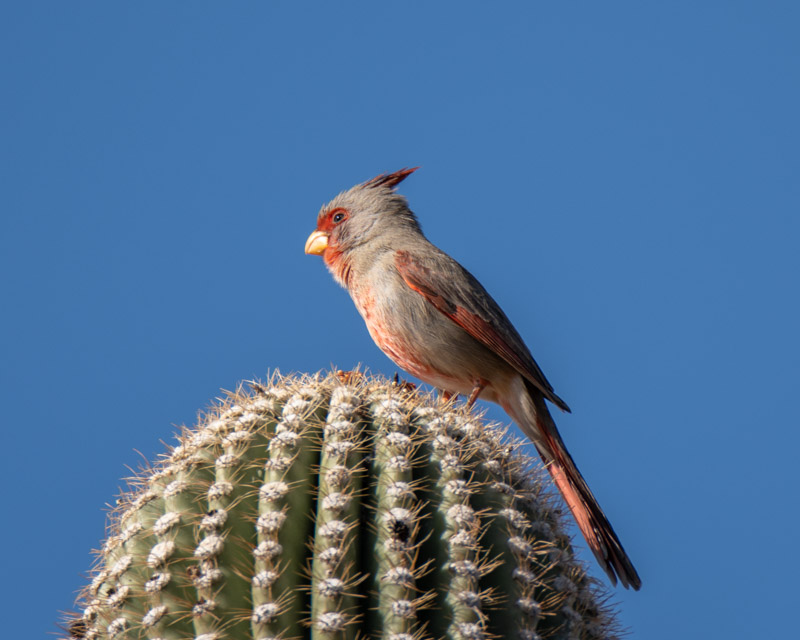
If you remember the recent photo email on the four woodpecker species, you may recall that the Acorn Woodpecker was observed at Peppersauce Campground on the north side of the Catalinas. When we first drove into the campground, there were 14 Gould’s Turkeys resting on the hillside at the entrance The background color shows you what “winter” looks like at mid-elevations in the mountains of southern Arizona.
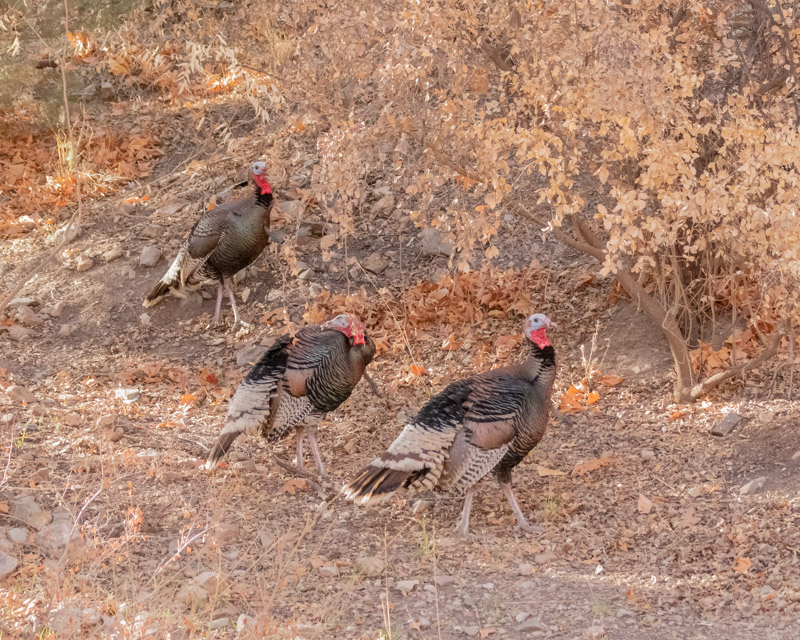
In the early 1500’s, European explorers brought home Wild Turkey’s from Mexico, where native people had domesticated the birds centuries earlier. Turkeys quickly became popular on European menus thanks to their large size and rich taste from their diet of wild nuts. The Arizona subspecies is called Gould’s Turkey. Once hunted to almost extinction in their native range, the Gould’s turkeys were reestablished in the Sky Island of Arizona in the ’90’s and are a conservation success story.
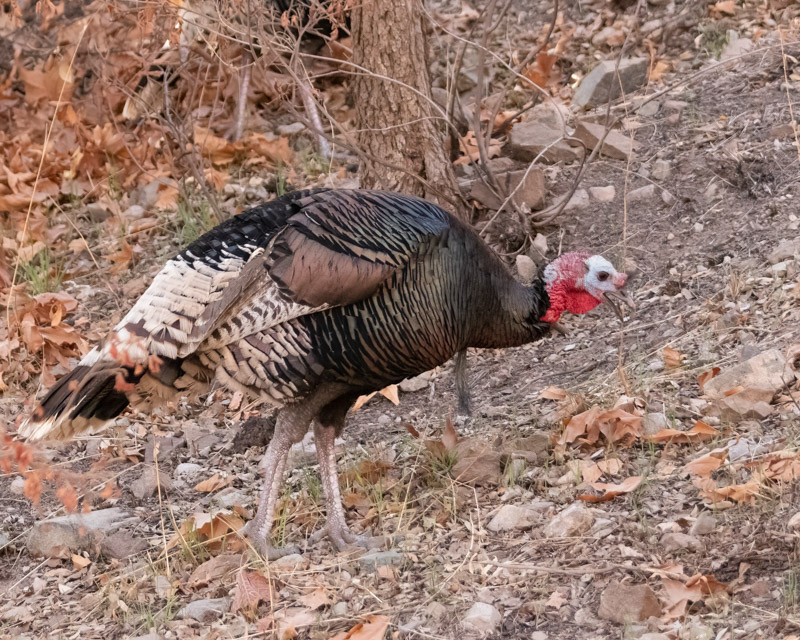
A large flock of Lesser Goldfinches were feeding in a patch of vinca in a midtown Tucson residential neighborhood. The males are a bright canary yellow with a glossy black cap. The backs of male Lesser Goldfinches range in color from olive to black.
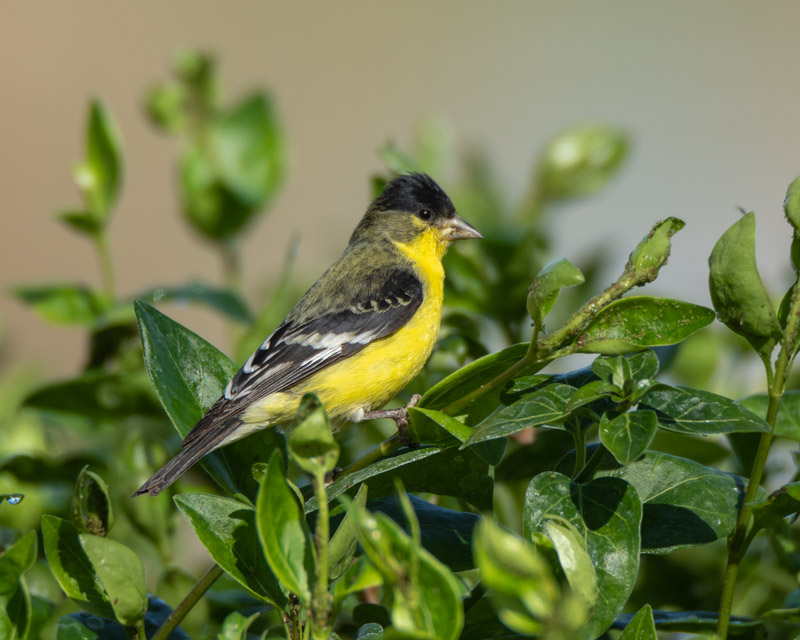
This male Lesser Goldfinch was feeding in a blooming rosemary plant. Lesser Goldfinches are seed eaters and if you hang a nyjer (thistle) seed feeder in your yard you are guaranteed to have Lesser Goldfinches arrive within days!
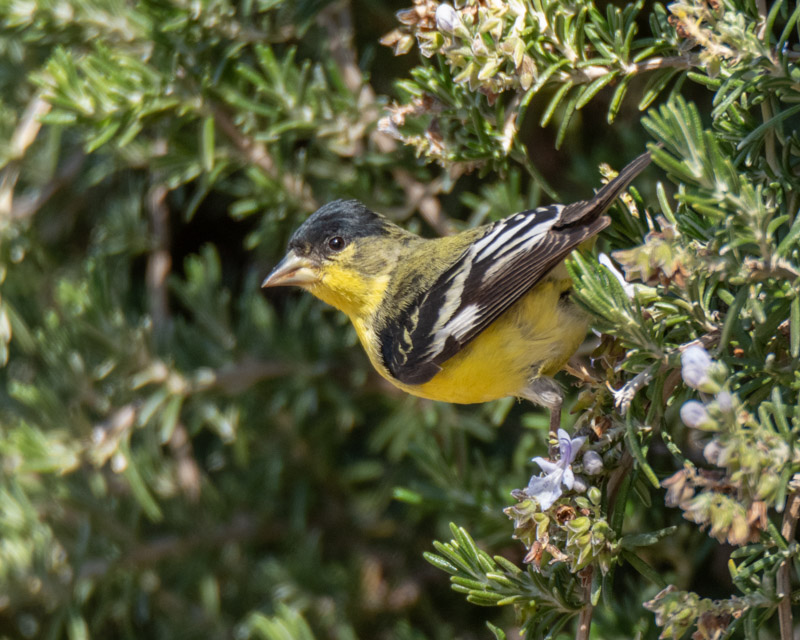
I thought this was a female Lesser Goldfinch due to its lighter color. However, when I processed the photo I began to have doubts. The many black splotches on its head makes me think this is a young male just beginning to grow in the adult feathers in his head. I may be wrong but that’s my hunch.
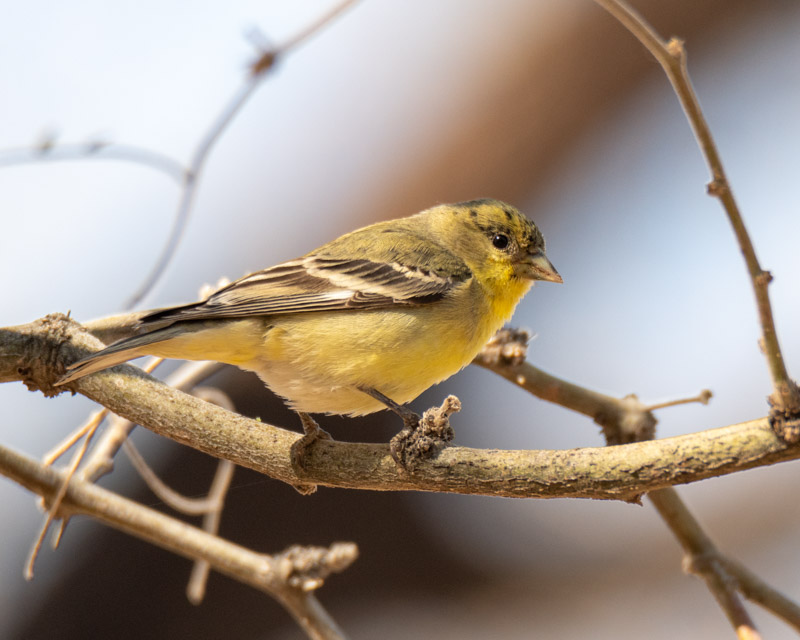
Another bird in the vinca patch also had yellow. This is a Yellow-rumped Warbler. We see these birds in Tucson during the winter. In the summer, they move up into the cooler climate in the mountains, so they migrate up and down in elevation seasonally rather than from north to south.
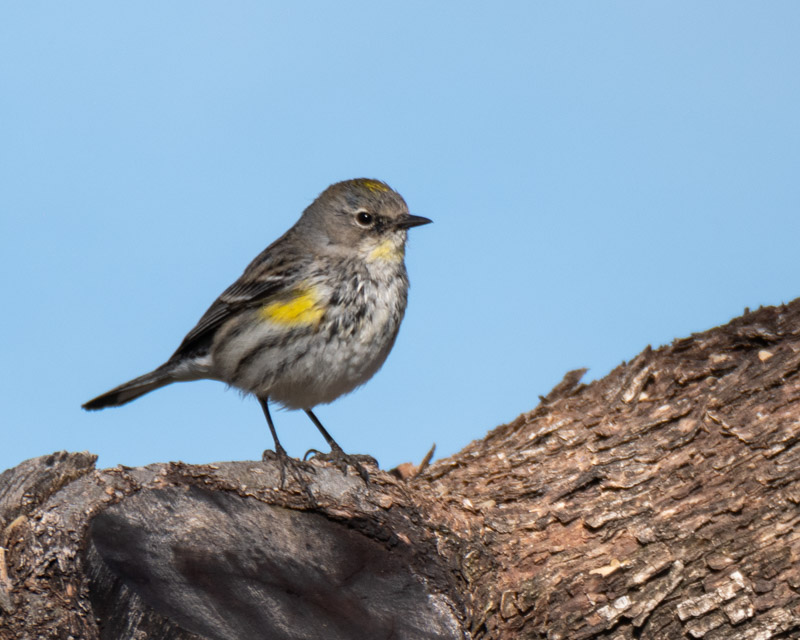
And in case you were wondering, the photo below displays why Yellow-rumped Warblers are named “yellow-rumped”!
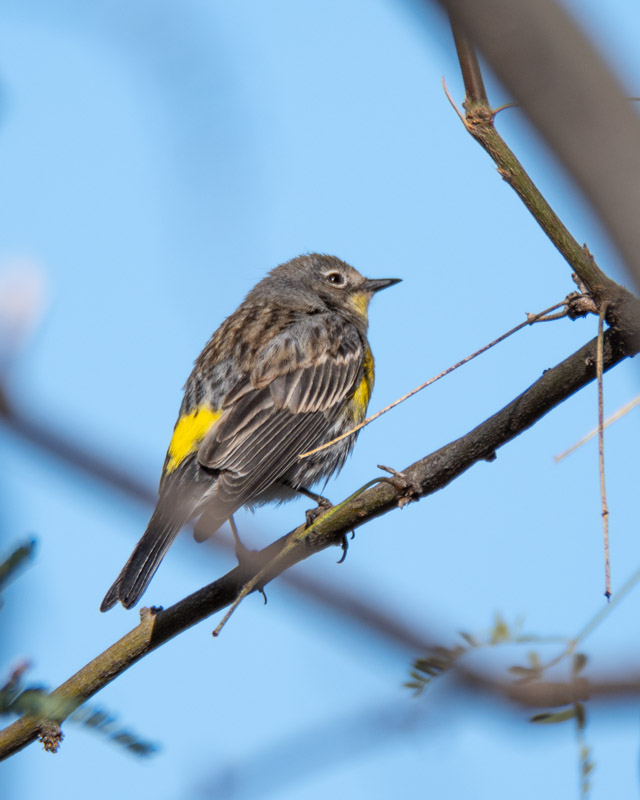
And finally, another bird with red- a Northern Cardinal. This Cardinal was singing from the very top of a mesquite tree on an overcast morning.
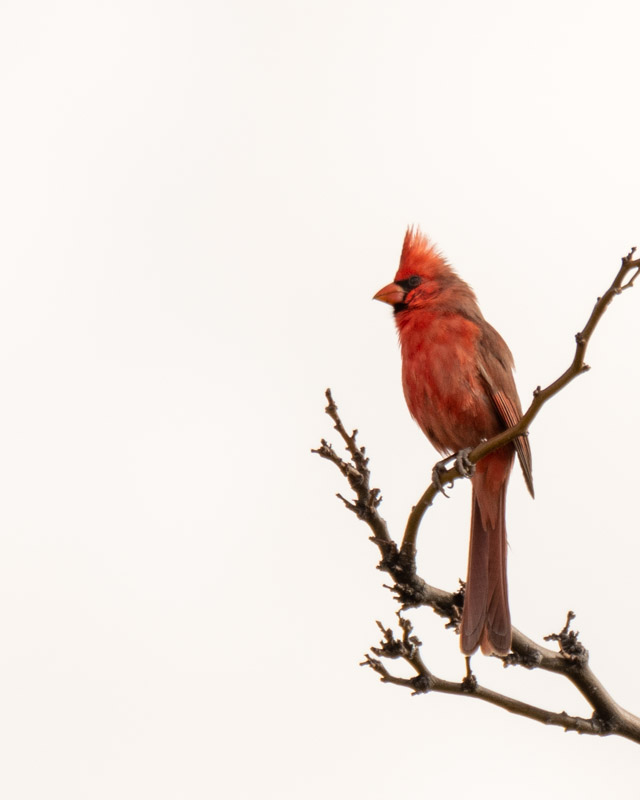
Back at Peppersauce Campground, I saw a different Northern Cardinal. This one looks unusual due to the black on its bill. Young Cardinals have black bills that turn orange as the birds become adults. This Cardinal is clearly an adult male, but the black on its bill makes me think this bird hatched late last summer and is still coming into its adult plumage.
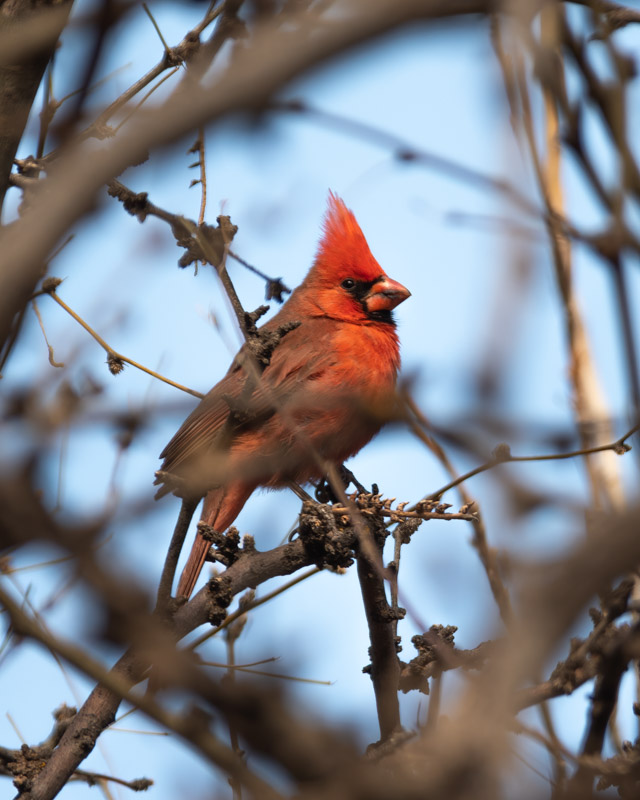
Next up, a young Harris’s Hawk hunting!
